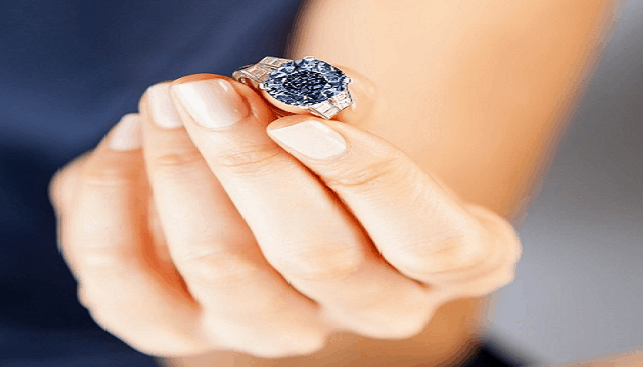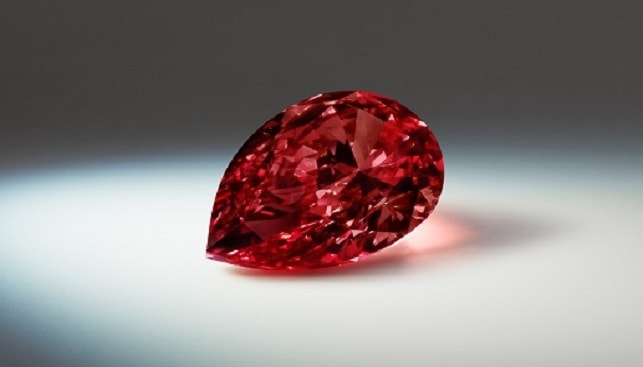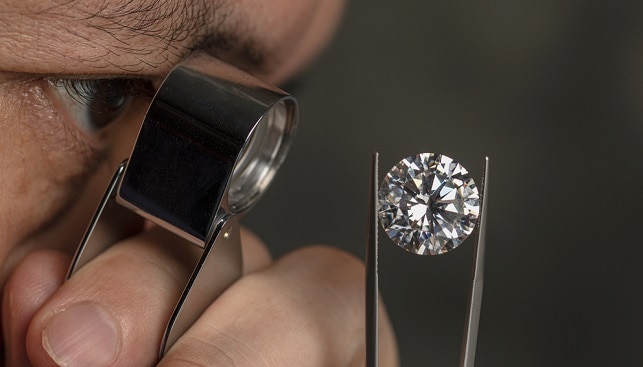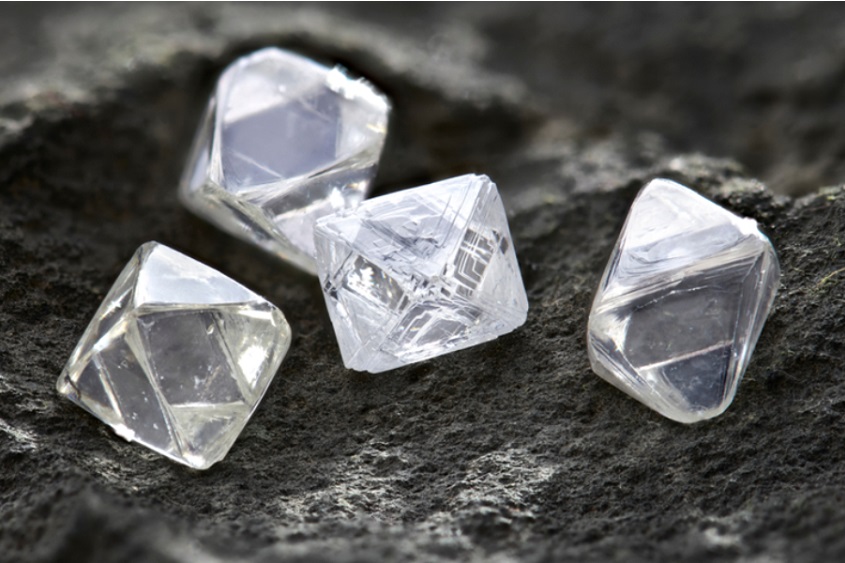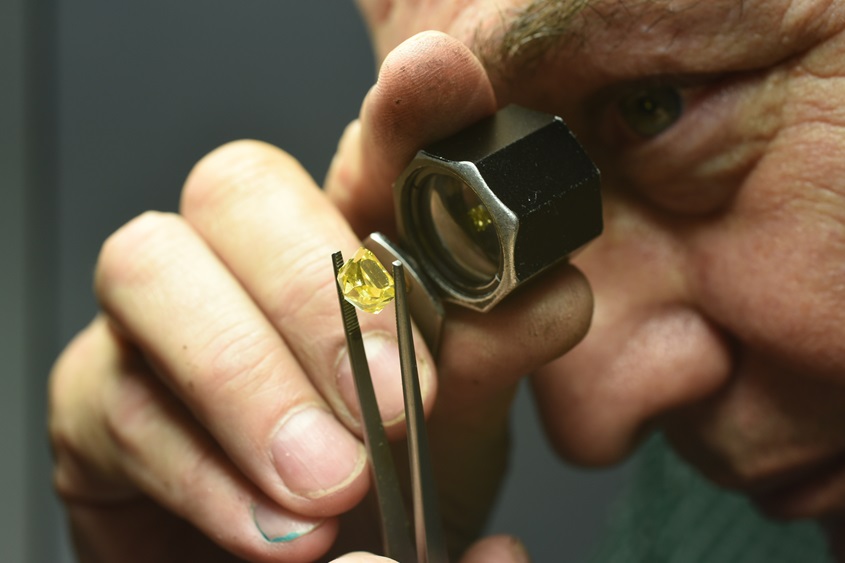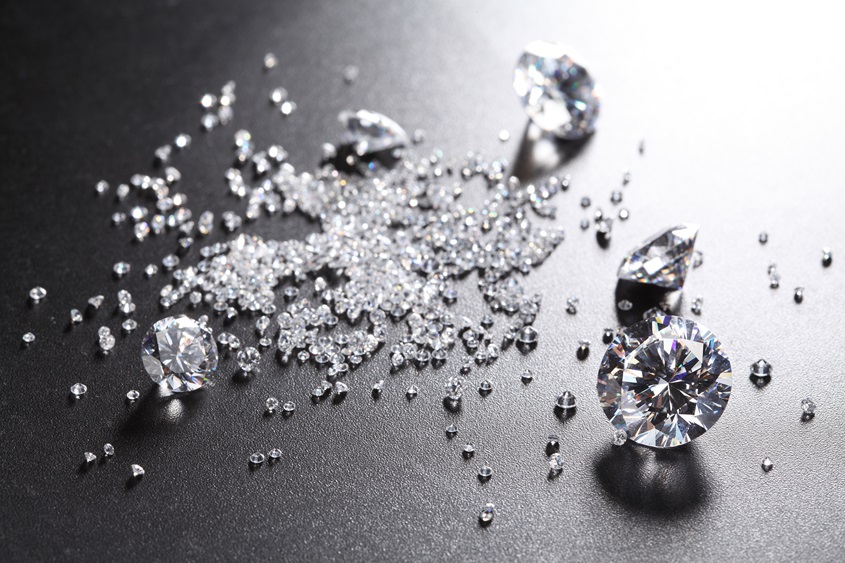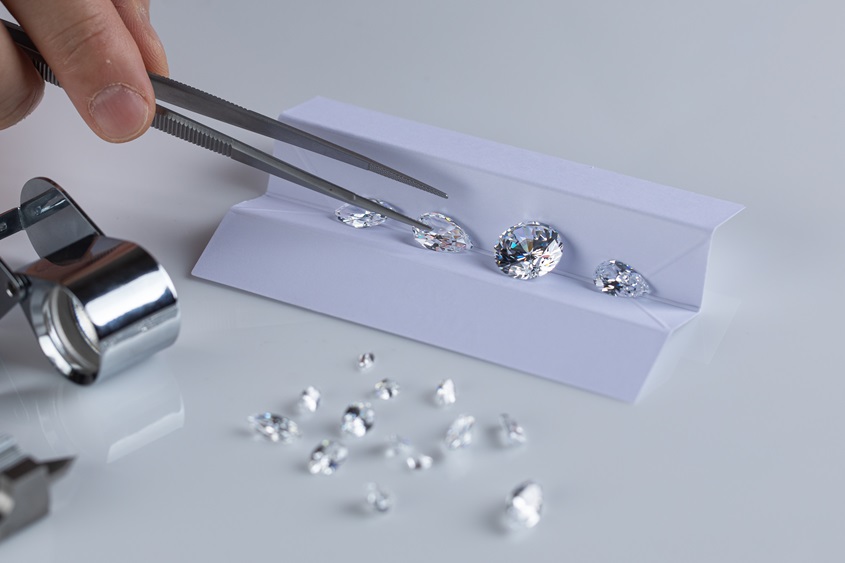Diamond fluorescence – sometimes known as the “5th C” – is the term for the visible wavelengths emitted by the diamond under invisible radiation.
Exposure to X-rays will cause almost all natural diamonds to fluoresce, while exposure to ultraviolet (UV) light – which “excites” the diamond’s electrons – will cause fluorescence in about a third of natural diamonds.
A diamond’s fluorescence can appear white, yellow, orange, green or red (one of the most famous diamonds in the world, the Hope Diamond, gives off a red phosphorescence in the presence of UV light), fluorescence in diamonds is usually blue. This is an important fact to note when discussing how the phenomenon of diamond fluorescence affects the color of a diamond.
As the color grading scale of the Gemological Institute of America indicates, practically all “white” diamonds feature some slight tint of yellow or brown. Blue fluorescence can mitigate the yellow of J-M colored diamonds, making them seem whiter and therefore more desirable. But when it comes to diamonds with higher color grades, many in the diamond industry believe that fluorescence obscures the stone’s natural light, which is why stones with a D-F color grade that exhibit fluorescence are generally considered less valuable.
This was not always the case. There was a time when fluorescence was a prized characteristic in diamonds with a color grade of D-F and such diamonds were marketed as “blue-white” diamonds. Eventually, “blue-white” became a general name used by salespeople to describe any fluorescent diamond, and legislation was enacted to restrict the use of the term.


